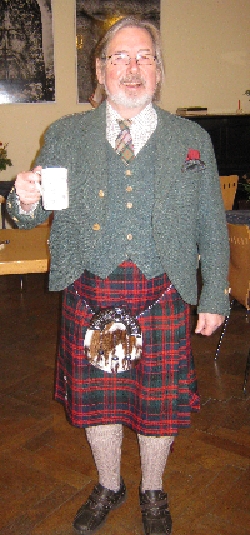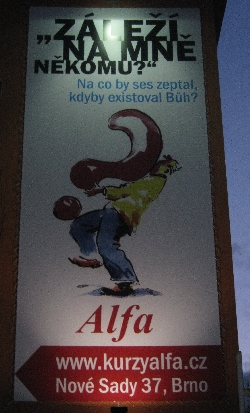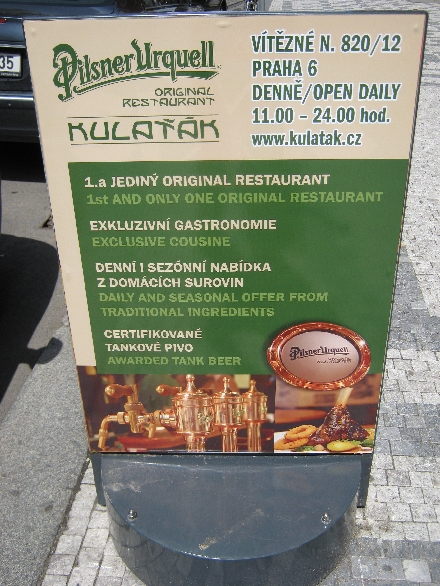
Where is winter? It is a question I’ve been asking for several weeks. This time last year, there had been snow lying on the ground for about seven weeks. Until yesterday, when we finally had a few heavy snow showers, there had been no snow at all in Prague this winter.
The temperature this evening has just dropped below freezing and the forecast is for temperatures of below 0 degrees Celsius for the next four nights at least. But there is still no sign of any serious snow.
There is a very good reason why I want some serious snow and for temperatures to remain below freezing for many days at a time. To ensure that the mosquitoes are kept at bay!
In the Autumn of 2008 when we first arrived in Prague and throughout the warmer months of 2009, we suffered from an abundance of mosquitoes here in the Chaplaincy Flat and elsewhere. Then two successive severe winters caused their numbers to drop to a handful. I fear that a mild winter might just allow the Prague mosquito population to recover!
In the meantime, a few evenings ago, we did experience this wonderful sunset, the picture being taken from one of the balconies of our flat. The floodlight pylon belongs to the stadium of FK Dukla Praha who, like the rest of the football clubs in the Czech Gambrinus liga, are on their mid-season break which started in early December and doesn’t conclude until late February. In view of the mild weather we have experienced so far this winter, they could still be playing!
As I mentioned in my recent sad post about Sam the dog, one of the many great things he did for Sybille and I was to get us out walking far more than before we adopted him. He became our ‘weight loss programme’ because he exercised us as we exercised him! We are both determined to continue walking just as much as we did when we had Sam so as to maintain our weight loss which between us now exceeds 30 kilos.
Most days, we would walk from the Chaplaincy Flat to the extensive and beautiful Stromovka Park, which lies about twenty-five minutes walk away from where we live. Through doing this, we got to know numerous other Czech and expat dog owners and improved our ‘dog Czech’ no end.
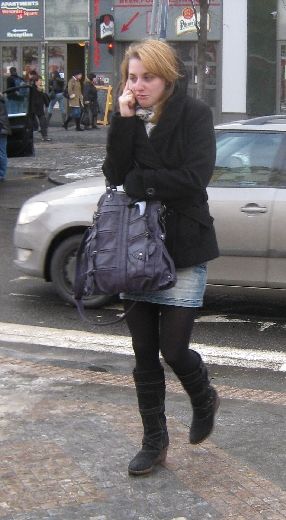
However, one behavioural habit which I regularly observed and continue to observe, annoys me intensely – dog owners and parents of young children, who go to the park, but then spend the whole time they are there, talking to someone else on their mobile phones!
The most extreme example I remember was of a woman we met, just by the entrance to Stromovka. She was pushing a buggy with a baby in it; was also holding onto the hand of a toddler and had a dog on a lead. She also was responsible for a slightly older toddler walking in front of her and for a second dog who was off-lead. But at the same time as all of this, she had her head bent to one side to hold her mobile phone next to her shoulder, in order to have a long conversation with one of her friends. I know women are meant to be able to multi-task, but…….
What conscious or sub-conscious message does such behaviour send to either the children or to the dogs? Why do people need to have such phone conversations if they are going to the park in order to spend quality time with their children &/or their dog(s)? Mobile phones are incredibly useful but they can also be a curse.
My photo is of a young woman walking across Václavské námestí/Wenceslas Square, also talking on her mobile, though admittedly, without dog or child in tow. But I hope I make my point – it is perfectly easy to say in response to a call, “I’m in the park with my dog/my children. I’ll call you back when I get home”.
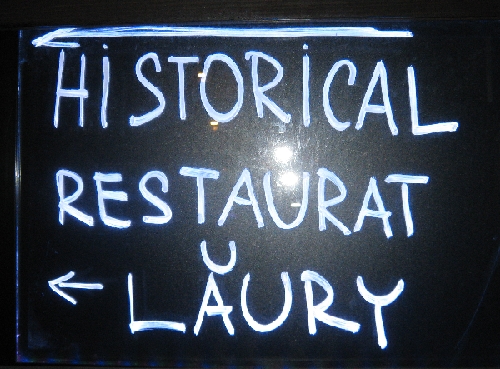
As part of our ongoing walk programme, as well as walking to and around Stromovka Park, Sybille and I have also recently started walking around some of the more central areas of the city, particularly as they are currently relatively free of tourists! However, I’m afraid I cannot resist posting this further wonderful example of Czenglish we spotted one evening recently in Malá Strana. What might be on the menu at a ‘Restaurat’?
Finally for this post, below are two photographs, both of which brought a smile to my face as I hope they will for the many readers of my blog.
This year, New Year’s Day was a Sunday. Our Church Treasurer Gordon is a Scotsman and marked Hogmanay, by coming to Church in his kilt. I did jokingly suggest that he could put the collection in his sporran to take it home to bank the following day! I should add that it is post-Eucharistic coffee rather than a wee dram that he is drinking!
And alongside is an invitation to ‘Explore the meaning of life’ – in Czech!

